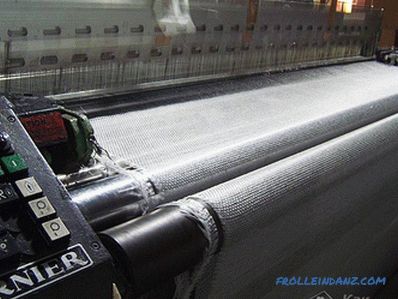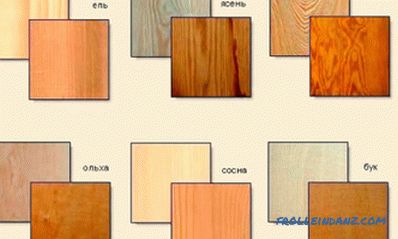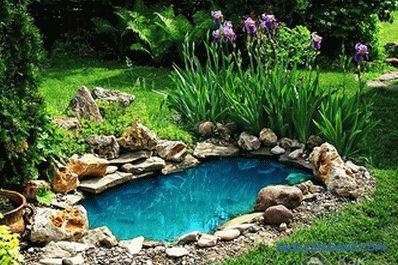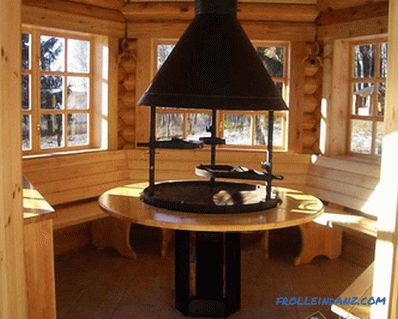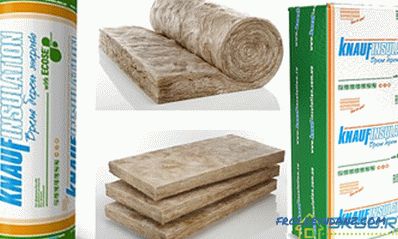The tree plays a big role in a person’s life. People build wooden houses because they are much stronger, warmer and more environmentally friendly than other building materials. Wooden cooking boards are used for cooking; door handles, loot, windows also many prefer to do with wood.
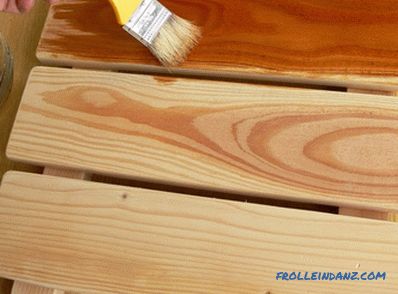
To protect the wooden surface from moisture penetration or drying, it is treated with oil.
How to protect wooden surfaces?
What is wood impregnation done for? Everyone knows that a tree has a good ability to absorb water, moisture, that is, it is hydrophilic. From this, problems arise: the wood cracks, cracks, and the wooden object simply deteriorates. But if this item is a wooden handle from a knife, then the situation can be easily corrected by replacing it, unlike in those cases where the wooden beam, which is the basis of the house, cracks and crumbles.
In order to avoid such troubles, we need wood treatment with substances that not only allow moisture not to penetrate the wood, but also fully protect it from the harmful effects of the environment.
Advantages of linseed oil
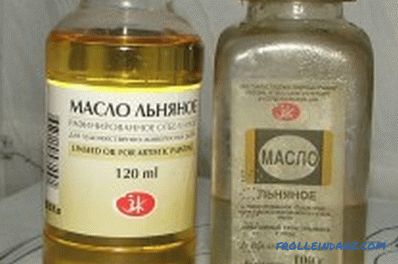
Linseed oil is an environmentally friendly product, it protects wood well and has high water-repellent properties.
There is a huge variety of stains, varnishes, chemicals in building materials stores, but they are all toxic and can harm human health. The best tool for preserving wooden surfaces is linseed oil. It is considered the strongest waterproofing substance and does not harm the human body. Wood impregnation with this tool has several advantages:
- environmentally friendly substance;
- helps to close even the smallest pores of wood;
- is water-repellent;
- improves the appearance of the wooden surface.
In the process of wood impregnation, the substances that make up the oil under the influence of external factors (oxygen, light, heat) thicken, that is, the polymerization process takes place. As a result of impregnation, flaxseed oil becomes a semi-solid mass. The more glycerides in the oil contain polyunsaturated acids, namely linoleic and linolenic, the higher is the ability of solidification and its protective properties.
After impregnation, the wooden product will need to be allowed to dry so that the wood is further protected as much as possible.
The complete drying of the wood surface, after treatment with linseed oil, will occur in 2-3 weeks.
You can speed up the process with the help of:
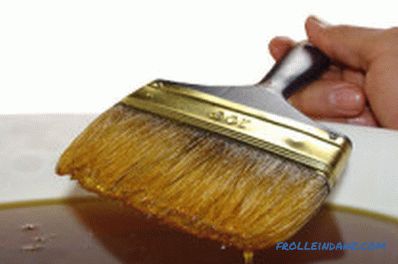
The oil thickens the wood impregnation process and it does not get dirty.
- turpentine;
- wax;
- tar.
When using turpentine, it must be remembered that this substance is toxic and can cause an allergic reaction. In addition, thermal burns can occur when in direct contact with the skin. Tar is a product of dry distillation of wood, it is the same turpentine, but less toxic. Therefore, for safety, it is better to choose wax. Dissolving the wax is not difficult: it is enough to warm it in a water bath and mix with oil. This composition has enhanced water repellency.
Impregnation of wood at home
In order to make impregnation of wooden objects at home, you must purchase linseed oil at any hardware store (if desired - wax, for faster setting). If wax is present, then it must be reheated first. Then flaxseed oil is heated and mixed with wax.
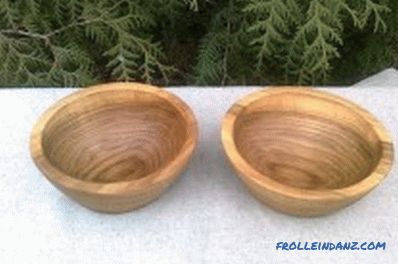
Linen oil can even soak in plates and children's toys.
No need to bring the composition to a boiling state: it is fraught with burns and is not needed at all for a wooden surface. After that, apply a thin oil foam sponge or hands on the wood with oil and rub it in, repeat the procedure 5-6 times. Leave to dry for 3-4 days (if wax is present).
Some household craftsmen immerse a wooden product in a container with oil and leave it for 2-3 hours. The main indicator that the impregnation of wooden products has already begun, are small air bubbles that appear on the tree.
Linseed oils, which include polyurethane components, do not require the addition of wax.
It has the property of being perfectly absorbed into wood and woody surfaces. Therefore, after processing, the oil practically does not remain on the wood, and the wooden surface becomes durable and wear-resistant. In addition, flaxseed oil is an excellent antiseptic substance for wood, because it protects it from moisture, which is the first cause of fungus and mold, because of which the tree begins to simply rot.
Useful tips on wood impregnation
All wooden surfaces can be treated with oil. No harmful components are added to it, so you can safely treat even such surfaces as:

The oil is applied to the wooden surface with a thin layer with a brush.
- wooden spoons, plates;
- children's toys made of wood;
- any furniture;
- ceiling and floor coverings.
The wooden surface should not be wet or damp - this is the main condition for processing. The permissible moisture content of wood should not exceed 14%. If the surface is not new and needs to be impregnated, first you need to clean it from residual varnish, paint. After that, the surface must be cleaned from dust and residual debris. In no case can not wipe the wood surface with a wet cloth. The wood will immediately absorb moisture. Then clean with sandpaper and remove wood dust. In the room in which the impregnation will be carried out, the humidity should not be lower than 70%. If the impregnation is carried out on the street, then not in rainy or foggy weather, but in sunny.
It is necessary to apply linseed oil on a wooden surface not in a thick but thin layer, and several times. Wooden items that are amenable to constant use (for example, sex), you need to handle 3-4 times a year, only in this case, it will serve a long service. And those household items that are not subjected to regular mechanical stress, such as bookshelves or cabinets, it is enough to handle 1 every 2-3 years.
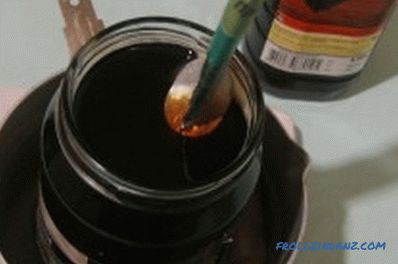
Small parts and objects can be immersed in oil for impregnation.
Experts do not recommend impregnating wooden surfaces that are already coated with varnish or paint. There will be no sense from this.
Depending on how much the surface is figured or smooth, and also considering the thickness of the tree, it is necessary to make a start from the amount of applied oil. It is worth noting that a thin layer will harden in a day. If necessary, you can carry out step by step impregnation. Processing can be done 6-8 times.
You can apply flaxseed oil with foam foam or brush. After processing wood brushes are best kept in cold water. Store the remaining flaxseed oil in a cold place, at a temperature not exceeding 0 ° .
The fact that a wooden coating will be more protected by oil wax is undeniable. It is made on the basis of linseed oil. In addition, after the impregnation of wood, the color gamut of the surface is preserved and does not change, and due to the fact that beanwax is included in the oil wax, the wooden surface becomes shiny. It is possible to impregnate light wood surfaces with wax based on flaxseed oil, and valuable wood species are no exception. The following surfaces can be treated with oil wax:
- stairs;
- furniture;
- interior windows;
- interior doors;
- wooden floors.
For the treatment of external wooden surfaces it is better to use pure linseed oil, because only natural and concentrated oil has a dirt-repellent property. Therefore, it is better to treat the external walls of log houses or bath walls with pure linseed oil.
Linseed oil is considered to be the universal and most inexpensive means for the preservation of wooden coatings. No need to look for expensive water repellent for wood. Enough to process the surface and ensure the effectiveness. Impregnation of wood is a process that takes quite a long time, but the end result will satisfy even the most capricious people.
Impregnation with linseed oil is carried out in two ways:
- by rubbing;
- by soaking.
Rub oil into wood only along fibers. Soaking is recommended for small wood items. The item should be completely immersed in flaxseed oil for several hours or 1-2 days. A prerequisite - the wood must dry after impregnation.
It is better to coat wooden surfaces with linseed oil rather than varnish. The fact is that the varnish cracks over time, and moisture can get into small cracks, which will lead to swelling of the tree. The wood will begin to deteriorate and swell in a few months. Linseed oil penetrates deep into the tree and does not become glassy after drying. Accordingly, cracks will not occur, and moisture access to the wood will be limited. Due to the fact that cracks do not appear, the flax covering preserves its shine much longer.
